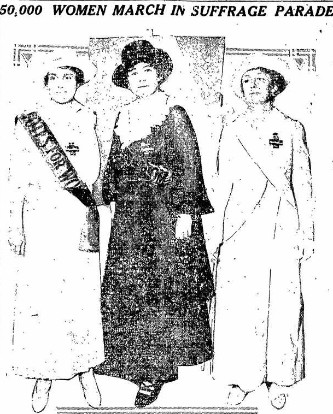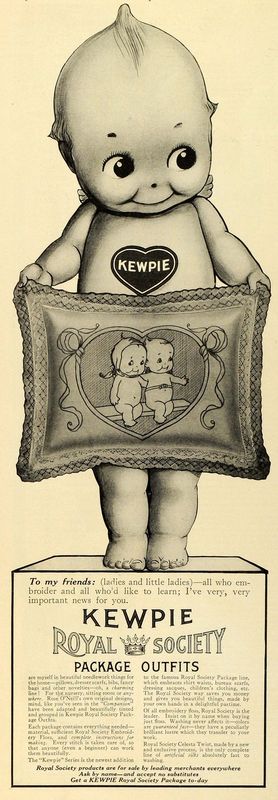The Kewpies and Rosie O'Neill.
“Kewpie is an elf but he gives one the flesh and blood feeling. There is a strange co-mingling of poetry, fantasy, humor, human feeling and subtle psychology in this creation of the gifted woman artist, author and dreamer.”[1]
[1] “How Cupid Was Changed to Kewpie.” The Indianapolis Star Magazine, April 5, 1915, page 63.

Mrs. Norman White, Society Leader and sponsor of the Parade; Rose Cecil O'Neill, creator of the Kewpie and Suffrage Cartoonist; and Miss Ethel Stebbins, Grand Marshall of Day marched in Saturday's Great Votes-for-Women Parade in New York.
Reno Evenin Gazette Reno, Nevada October 17, 1915 Page 22
By 1913, Rosie O’Neill, age of 31, was “one of the richest, cleverest, and most famous writers and artists in America.” Twelve years earlier, Rosie sold the family cow to obtain enough money to journey to New York City with her drawings and manuscripts. [1] Born in Wilkes Barre, Pennsylvania, she grew up on the Nebraska prairie. She never attended art school or had a single drawing class but she was already writing novels and illustrating periodicals when her large family moved to the Ozarks. Bonniebrook was the family’s new home surrounded by babbling brooks, giant Sycamores, the fragrance of honeysuckle vines, and the mountain people of Missouri.
[1] “Rose O’Neill.” Colorado Springs Gazette, September 28, 1913, page 40.
Kewpie was born during Rosie’s years in New York. As an illustrator for Ladies’ Home Journal, Rosie enhanced her love stories with Cupids she dubbed Kewpies, (baby talk for Cupids). The rest of the world quickly fell in love with her angelic creations with the turnip tops. An expert marketer, Rose aligned herself with Woman’s Home Companion and The Royal Society Embroidery to publish “pre-stamped dresser scarfs, bibs, fancy bags, and other novelties.”[1] An Embroidery Society ad stated “Every one concedes these Kewpies to be the cutest, most lovable little creatures ever made to make people smile.” The Society advertized in the Trenton Evening Times, Trenton, New Jersey, on September 2, 1913, “Kewpies are now sold in Royal Society Package outfits some stamped and tinted on fine white lawn for satin stitch and outline embroidery others are stamped on white huck for darning and outline embroidery."
[1] “Rose O’Neil’s Kewpies.” The Independence Star, Indianapolis, IN, September 10, 1913, page 14

Rosie also worked closely with German doll manufacturer, George Borgfeldt and dollmakers of Thuringian forest insisting that, “This Kewpie doll is to carry a smile to the world and must be sweet and funny.”[1] The Colorado Springs Gazette reported in 1913 the popularity of Kewpies over “all corners of the world from New Zealand to Timbuctoo.”[2] Even new mothers would style their infants hair to imitate the Kewpie curl. In the United States, the Kewpie Dolls made of bisque, celluloid and rubber, were billed as “the quaintest, queerest, and most lovable little creatures the Doll Family has ever before seen. An odd little body, with the cutest, cunning smile, and queer out-stretched hands and fingers to look upon them is to put one in good humor and a laughable, jolly mood; you just cannot resist the smile.”[3] Made in sizes from one inch to three feet in height, Rosie’s beloved, impish Kewpie became the best selling doll in history.[4]
[1] “Rose O’Neill.” Colorado Springs Gazette, September 28, 1913, page 40.
[2] “Rose O’Neill.” Colorado Springs Gazette, September 28, 1913, page 40.
[3] “More Kewpie Dolls.” The Washington Post, Washington, D.C., July 2, 1913, page 7.
[4] “Interesting Facts.” Hamilton Daily News Journal, Hamilton, Ohio, November 22, 1971, page 19.